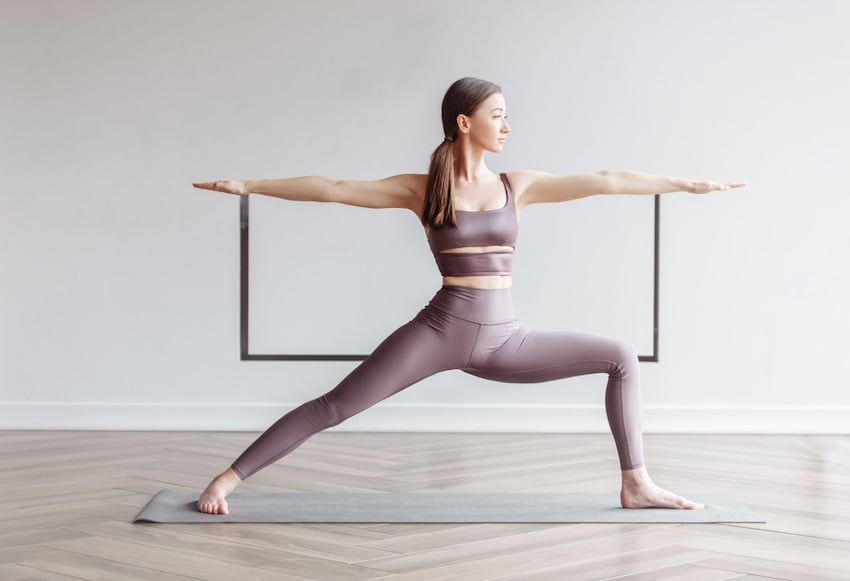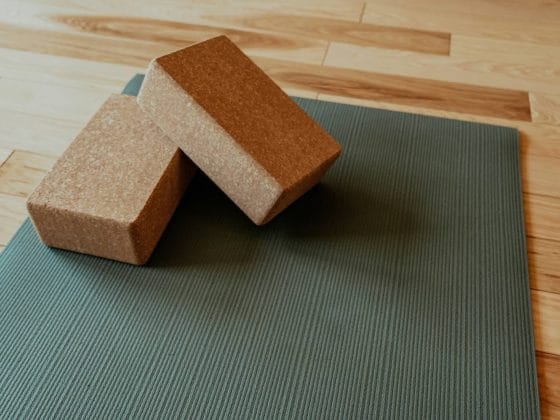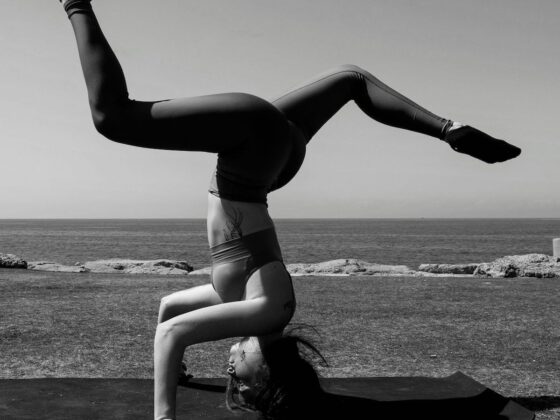This is my biggest nightmare. I’m standing at the front of a yoga class, all eyes on me, and suddenly I forget what to say. Do you keep going with a silent practice, or do you run out of the room in a nervous fit? And I thought getting your 200-hour or 500-hour yoga teacher training certification would solve it all.
If teaching yoga was all about perfecting your poses and maintaining the zen of a Buddhist monk, then you would not be reading this. Becoming a confident yoga teacher is as possible as mastering the downward dog pose, except you’ve got a room full of people staring at you and expecting miracles. No pressure, indeed!
Even if you are the most experienced and skilled yoga instructor out there, there are always ways to improve. Let’s face it: teaching yoga is intimidating. Whether you’re new to the game or you’ve been at it for years, there are always moments when you doubt yourself, or when you feel lost or unsure.
Fret not, fellow yogis, because I have some tips for all of you nervous Nellies out there who want to become more confident in leading your classes without breaking a sweat, literally and figuratively.

Expand your yoga-jedi skills
First and foremost, it’s important to remember that you are always a student, no matter how experienced you may be. Continuing your own personal practice is essential to staying in touch with the challenges faced by your students on a daily basis. You can also broaden your horizons–explore books, workshops, online courses.
I personally love Glo as it offers a wide range of classes, tutorials and educational content to explore at my own pace. I also enjoy listening to podcasts on the go, such as The Connected Yoga Teacher and YogaLand, which features interviews, discussions, and insights from experienced teachers.
As we deepen our knowledge and understanding of yoga, its philosophy, anatomy, sequencing and teaching techniques, we are able to teach and deliver instructions with confidence, knowing we have a solid foundation and comprehensive understanding. It also makes us adaptable, enabling us to meet students where they are, and confidently adjust our plans, offer alternatives and navigate situations at ease.
Finally, I am no stranger to imposter syndrome and I’m pretty sure most of you are not either. The more we educate ourselves, the more we will realize our own capabilities and value we bring. It is only then can we step confidently into our roles as teachers, knowing we already have the skills to effectively guide students.
Vibe with your students like a pro
As teachers, our primary goal is to create a supportive environment for our students, and a space where they can connect with their bodies and mind and find peace.
When I show up at class, I show up with the intention to connect and I remind myself that the class is not about me, but them. This means focusing on their needs, experiences, limitations and giving them space when they need (Listen to “Stop Micromanaging Your Yoga Students” and “The Real Reason Why Students Come Back To Yoga Class”). Be interested in what makes them tick or what their struggles are.
And then, there’s also the practical side of things such as showing up 10-15 minutes early to prepare the studio, engaging with each and everyone of them before class and greeting them by their names with eye contact.
You want your students to see that you really care, even when they do not expect it. It’s absolutely crucial to build a relationship with your students–or risk losing them to a cheaper app or free videos on YouTube.
Forge a super supportive yoga squad
Yoga is not just about postures, but also the connections we make. Being surrounded by others can give a sense of reassurance and comfort, and knowing that someone has your back bolsters your confidence in times of self-doubt, and when facing difficult situations.
I remember not dedicating enough time to my yoga teacher training as I was doing it concurrently with a corporate job. As a result, I ended up failing my practical examination twice forgetting the cues and sequences, and even robotically reading instructions without connecting. If it was not for the encouragement from my classmates, I would have passed on my third attempt, and would have lost hope and given up my dreams of teaching yoga.
It’s time to build yours! Start by engaging in community service initiatives or organizing donation-based classes to give back to the community. Or organize a potluck and invite your yoga squad (and get them to invite their friends).
The more people you get to know, the more feedback you can get to improve yourself, and who knows, you might even score yourself collaboration opportunities. By going further together with others, it can greatly boost your confidence knowing others are on the same journey as you.
You can also engage with online communities and forums such as Yoga Forum, or yoga-based Facebook groups and connect with other yoga teachers, exchange ideas and seek advice. These foster a sense of community and support, and most importantly, knowing you’re not alone in your journey.

Embrace Your Mojo
Sharing this life-changing practice with others as a yoga instructor is truly rewarding. However, we often have doubts about our abilities as instructors.
Confidence is not about being perfect or flawless; it’s about embracing our imperfections and owning them. It’s about knowing who we are as individuals and being comfortable in our own skin, flaws and all. (Watch “5 Tips for Yoga Teachers Finding Your Authentic Voice” by Jimmy Barkan)
This authenticity ensures you connect with your students on a deeper level, and inspire and empower those on the mat. So be true to yourself, honor your strengths and accept your limitations.
As a yoga newbie, I found it cool and insta-worthy to be strong and showcase various complex stunts that highlighted how strong I was. Over time, I discovered my interest and knack for the spirituality and slowing down, and these days, I focus on on strengths–helping students take their journey inwards and discover themselves through yoga.
Authenticity must be nurtured from the inside out. So, take a deep breath, close your eyes, and visualize yourself as the confident and capable yoga teacher you want to be. Trust me, visualizing your success can do wonders for your self-belief.
Level up that self-care game
Finally, to inspire and best lead our students, we need to first take care of ourselves. And I’m not just talking about getting a mani-pedi, a long bath or massage (although those things are great too!)
Prioritize your own practice, engage in activities that bring you joy, and nourish your body, mind and soul. Meditate, journal, explore hobbies outside of teaching and make it part of your routine.
Don’t just take my word for it, the Yoga Alliance recently published an article on this exact topic, titled ‘Self-Care for Yoga Teachers: Tips and Tools‘. So let’s start unleashing our inner guru by prioritizing self-care. Yoga teacher confidence tips? Check!
P.S: I found journaling prompts such as the ones found in “The Yogi Assignment” by Kino MacGregor and “The Desire Map” by Danielle LaPorte especially useful, as it helped to reflect and also guide me on my journey of self-discovery as a yoga teacher.
In a nutshell, confidence is the key to unlocking your true potential as a yoga teacher. It’s about standing in your power, believing in yourself, and trusting that you have everything you need to be an amazing yoga teacher.
So, tighten that sweatband, don your best yoga outfit, adjust your mantra playlist, and get ready for a bumpy and totally worth-it ride.
You’ve got this. Now go out there and show the world what you’re made of!



